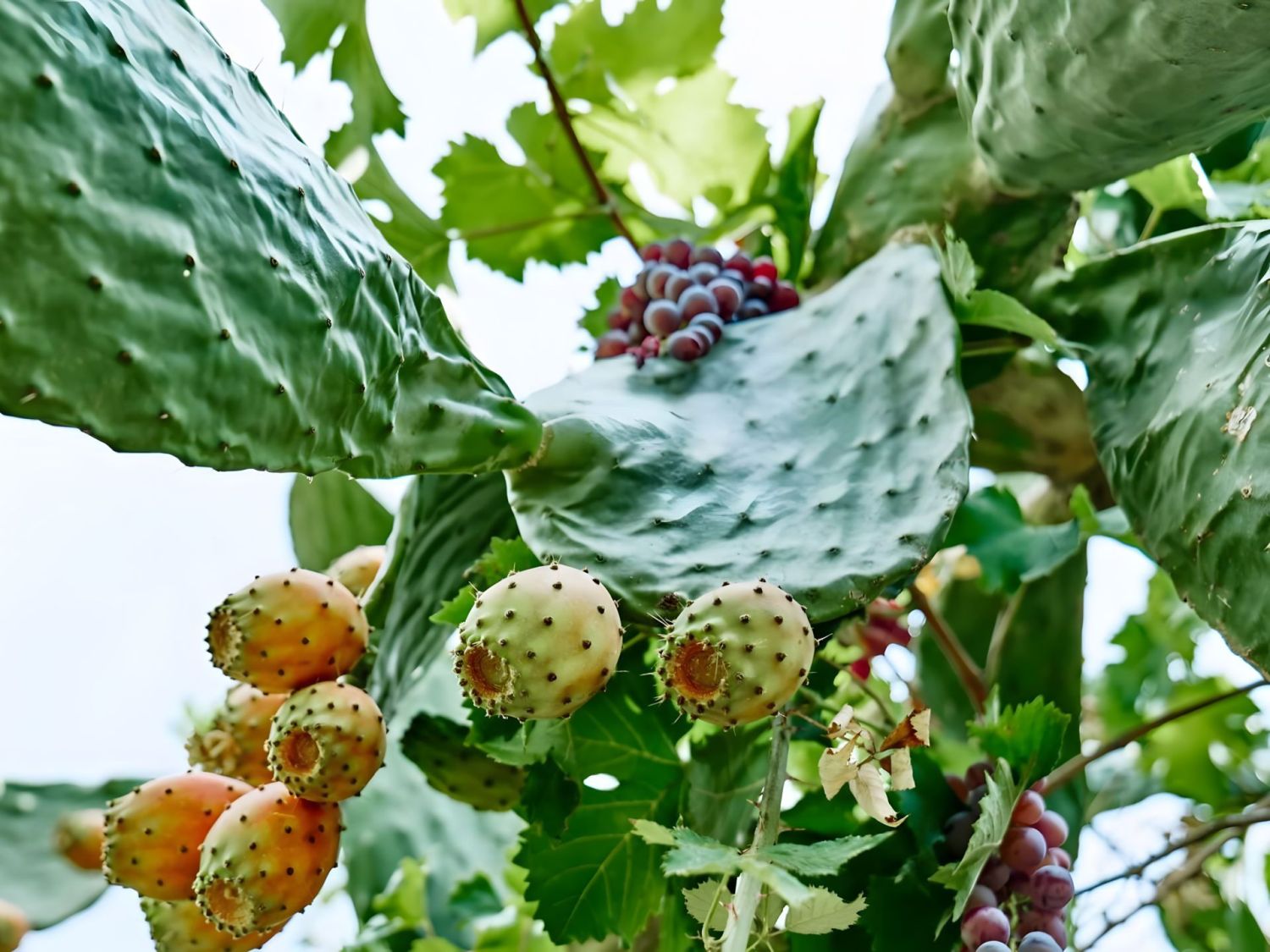The motherland of the prickly pear is Mexico. In antiquity, it was considered a sacred plant by the Aztecs.
The fruit first appeared in Europe around 1493 with the return of Christopher Columbus.
The plant grows in even very arid areas and can withstand temperatures of over 40 degrees. Thanks to these characteristics, it has found its European home in the Mediterranean basin.
As far as Italy is concerned, the regions most populated by the plant are Sicily, Calabria, Apulia and Sardinia. By virtue of the high plant population, we boast the record of being the third largest prickly pear producing country in the world after the United States and Mexico, and the first in Europe.

When did the prickly pear arrive in Sicily?
The fruit was imported to Sicily by the Spaniards around the 16th century and soon found its way to the slopes of Etna where it is also cultivated.Sicilian pistachio.
Various myths and legends revolve around its plant that you can discover in our article.
Thanks to its beneficial properties, as in Mexico, the plant began to be used in Sicilian folk medicine.
Where is the prickly pear grown in Sicily?
In the central-eastern area, San Cono, the first producing city in Europe, stands out.
In the Etna area, crops are concentrated in the territories of Adrano, Belpasso, Biancavilla, Militello and Paternò.
In the south-western area, the municipalities of Menfi, Montevago and Santa Margherita Belice stand out.
In 2003, the Etna prickly pear obtained D.O.P. recognition. This recognition, in 2012, was also awarded to the city of San Cono in the province of Catania as the first prickly pear producing city in Europe.
How many prickly pear varieties exist in Sicily?
Four varieties of this wonderful plant grow in Sicily and differ in the colour of the fruit flesh:
- sulphur: yellow in colour
- sanguine: red in colour
- muscarella: white in colour
- moscateddo: orange in colour
The most prized variety is the so-called bastarduna, the late fruit that comes from the scozzolatura (and is eaten in December.
What is the prickly pear season?
The first flowering occurs between late spring and early summer, but in order to obtain more delicious fruit, scozzolatura is carried out. In practice, the flowers that are born in this period are cut off to make room for the second flowering, which takes place between September and December. By applying this technique, it is possible to obtain larger fruits with a more intense flavour. The fruits that are harvested from the second flowering, in Sicilian dialect, are called fioroni, bastarduna o scuzzulati.
Flowers that are harvested after the second flowering, because of their characteristics and due to the smaller quantity, have a higher market value.
Once harvested, the fruits are stored and their thorns are removed for marketing.
How do you say prickly pear in Sicilian?
In Sicilian, there are three terms to identify the prickly pear depending on its ripeness:bastarduna,scuzzulati e burduni. The first two terms identify the ripe fruits of the second flowering, while the last identifies the fruits of the first flowering.
What are the parts of the prickly pear called?
The prickly pear plant can reach a height of up to 5 metres. Its branches, covered with glochids, which in turn consist of small spines, are called blades or cladodes.
The flowers, from which the fruits later develop, grow on the ends of the cladodes.

What are the beneficial properties of the prickly pear?
Both the fruits, flowers and cladodes of the plant possess innumerable beneficial properties.
The juice extracted from cladodes in ancient times and is still used today to soothe skin inflammations and wounds.
The fruits are rich in nutrients including iron, calcium, phosphorus and fibre. Due to their low calorie content, they are excellent allies in slimming diets as they give the body a sense of satiety.
The fruits possess astringent properties and are also rich in vitamin C.
In contemporary Mexican medicine flowers are used for their diuretic properties and to combat cystitis. In Sicilian folk medicine, a decoction of the dried flowers is recommended for renal colic.
A recent discovery on the beneficial properties of the prickly pear was made at the New Orleans Department of Medicine where it was shown that an intake of the fruit can diminish the effects caused by alcohol intoxication.
Given its innumerable properties, prickly pear is also used in cosmetics in creams, shampoos and soaps.
When not to eat prickly pear
The fruit is strongly discouraged for those suffering from intestinal diverticula. Excessive intake of prickly pear can lead to intestinal blockage.
How do you eat the prickly pear?
The first step to clean the prickly pears of their remaining thorns is to take them, place them in a colander and move them under a stream of cold water. To avoid pricking yourself, you can use gloves. To peel them, simply cut the peel lengthwise and remove it with your hands or a knife.
Once peeled, the can be cut into pieces and eaten fresh or used for create numerous recipes.
How is the prickly pear preserved?
There are several ways to store the product.
- in the refrigerator:
- place them in a plastic or stainless steel container covered with a dampened cloth
- place them in a vacuum bag
- wrap each fruit in cling film
- dried: once cleaned, they must be cut into rounds and sprinkled with brown sugar. Every day, they must be turned on the opposite side
- jams and marmalades
Recipes in the kitchen?
In addition to creating jams and marmalades, the prickly pear can become the star of both sweet and savoury recipes.
If you are a fruit lover or want to be enveloped in an intense flavour, from now on your tables will not be able to miss the Paesano prickly pear liqueur. Its sweet and delicate taste is perfect to accompany your meals.
